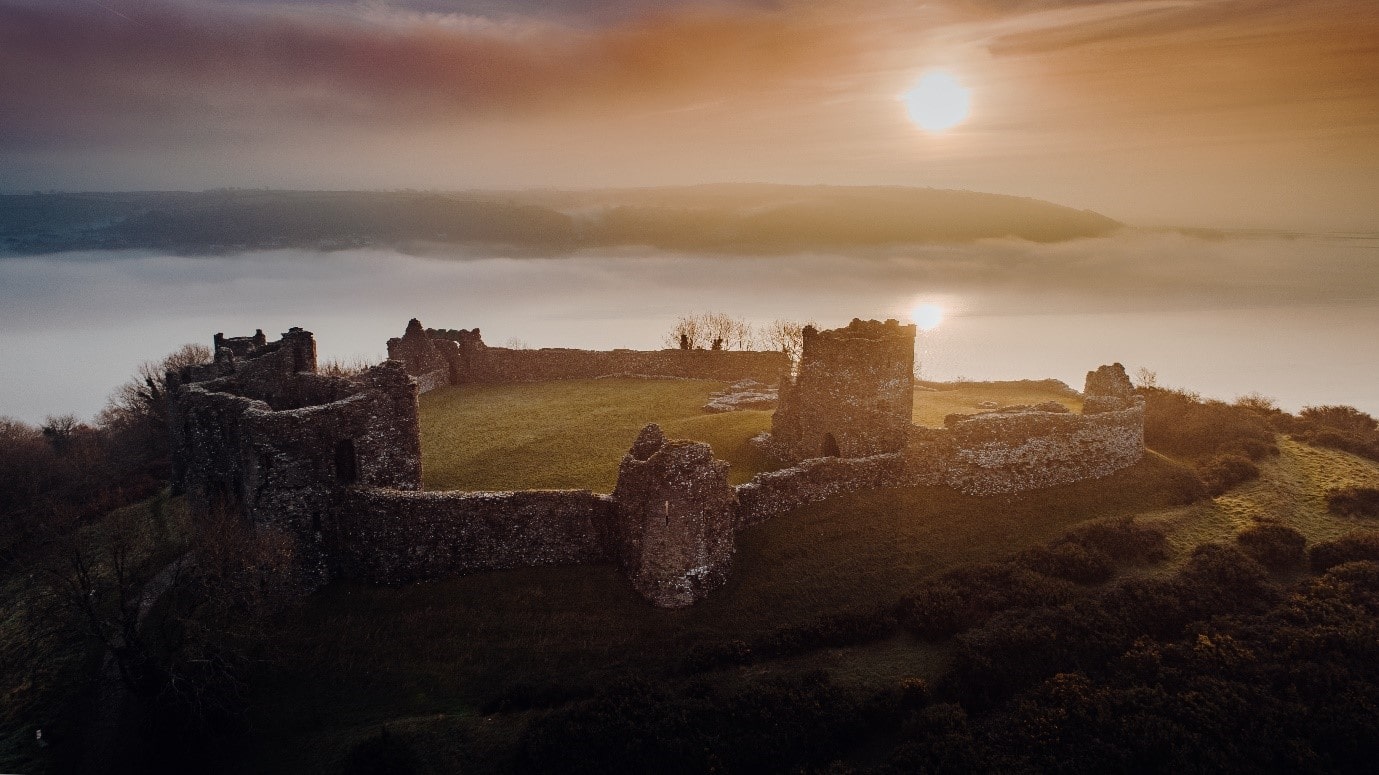This tale comes from the longer story of Culhwch and Olwen, in which the young squire Culhwch falls in love with Olwen, the daughter of an evil giant, and seeks her hand in marriage. Olwen’s father sets Culhwch a series of challenging tasks, which he must complete in order to marry her.
By far the hardest task set is to recover the magical comb, scissors and razor entangled between the ears of the Twrch Trwyth, an Irish king turned into a wild boar by God for his wickedness. He’s accompanied by his seven sons, also turned into piglets as a result of the curse.
Culhwch asks for help from his cousin, King Arthur, who calls upon his best knights and together they head for Ireland.
Things don’t go to plan in Ireland and after a failed ambush enrages the Twrch Trwyth, he and his sons flee back across the sea to Wales, leaving Culhwch, Arthur and his men stranded and counting the casualties.
When they eventually get back to Wales, they see that the Twrch Trwyth’s revenge has been swift and devastating, having ravaged towns, villages and crops across the country.

Culhwch, Arthur and his army catch up again with the Twrch Trwyth in what is known today as the Amman Valley and five of his sons are killed before he takes flight.
They then corner the Twrch Trwyth and his two remaining sons and manage to wrestle the scissors and razor from the boar’s head and kill the last of his sons. However, the Twrch Trwyth escapes again before they meet for a final battle and Arthur manages to retrieve the comb from the boar before he leaps into the sea, never to be seen again.
Having completed all the tasks, Olwen’s father gives Culhwch permission to wed his daughter and Culhwch remains true to her for the rest of his life.
If you visit the Amman Valley and surrounding area, you’ll notice references to the Twrch Trwyth in a few places. The local high school, Ysgol Dyffryn Aman uses a boar’s image in its logo. It appears on the crests for Ammanford Town Council and both its football and rugby clubs. On the approach to Ammanford, you’ll spot sculptures of a boar and two piglets, constructed from stainless steel and bronze. And if you happen to be in the town in September, you might catch the annual Enchanted Boar Festival/Gwyl y Twrch Trwyth.
Celtic Connections
The people of Wales and Ireland do love a good tale. Even more so if they’ve an audience to share it with. That’s how our most famous myths and legends were passed on for generations, until the clever medieval monks had the foresight to write them down, ensuring they’d endure for generations to come. The story of Culhwch and Olwen comes from a collection of eleven tales called the Mabinogion. Much of Ireland’s mythology was transposed into volumes of manuscripts, from which famous tales come like that of Oisin and Tir na nÓg, Cú Chulainn and Fionn Mac Cumhaill, and which are still told to Irish children today.